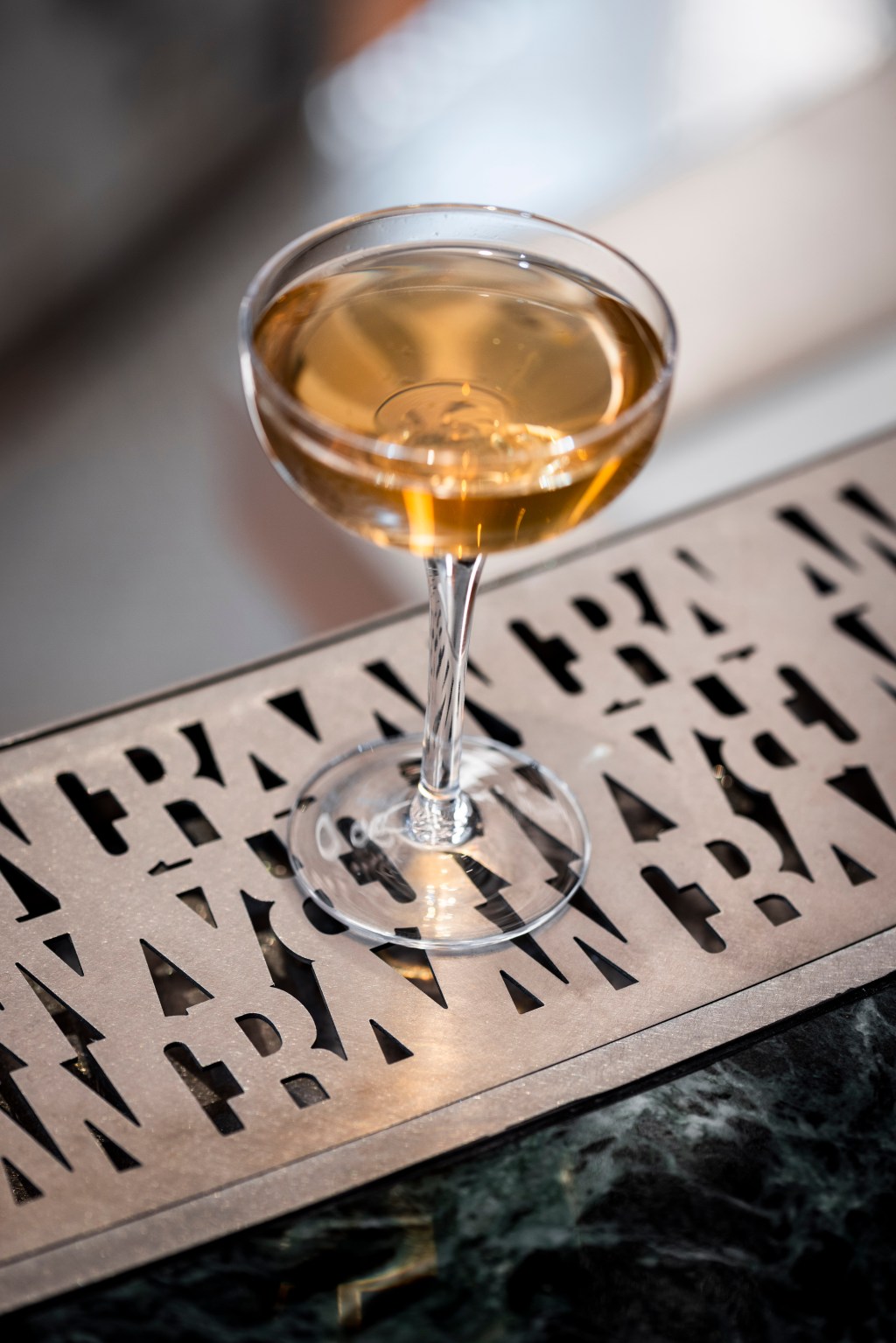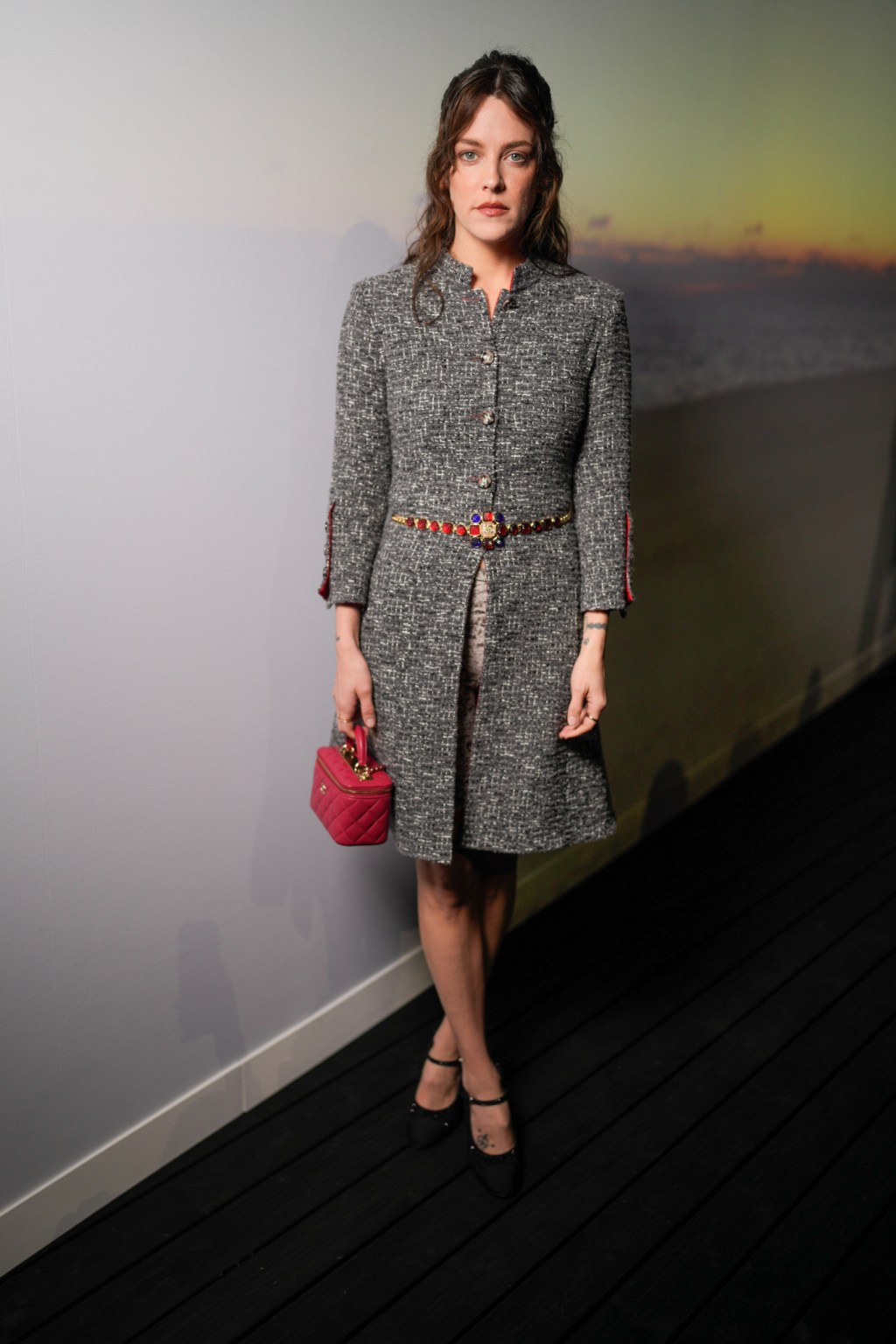Where can you find a bookstore, two cocktail menus, three centuries’ worth of French culture — and a music kiosk?
Neatly packed in a 2,700-square-foot 17th century townhouse on Boulevard Saint-Germain that is now home to Cravan, the five-story cocktail-centric venue imagined by historian-turned-restaurateur-turned-mixologist Franck Audoux.
A cursory glance from the street could lead one to believe this is just another chic cocktail bar, with stools neatly lined at a wood counter and a clutch of alcoves dotted along wood-paneled walls.
But from the entrance with its 1:15-scale model of the building that contains an even tinier replica of itself, stepping inside is the start of a surreal continuation of the universe Audoux created in the first Cravan bar — a 17-seat slip of a place located in a 1911 building in the 16th arrondissement. They are named after Arthur Cravan, a poet, boxer and Dadaist figure who was a nephew of Oscar Wilde.

The 120-seat Saint-Germain townhouse means to be “the kind where you can get lost in,” where “the higher you go, the deeper you are steeped in references that nourish Cravan,” explains Audoux, who before veering into mixology spent a decade working in contemporary art and another in gastronomy as one of the cofounders of noted fine dining restaurant Le Chateaubriand in the 10th arrondissement.
The original bar applied what he learned during the research for his “French Moderne: Cocktails from the 1920s and 1930s” book, published in 2019 at Rizzoli. Tapping into their history as an embodiment of a time of social and cultural change, Audoux turned the idea of “French excellence in an American or English drink” into contemporary concoctions that drew rave reviews.
They continue to be the star here, served without flourishes or fancy garnish. Ice cubes only appear in long drinks and if there’s one secret Audoux is willing to share, it’s that a dry, rather than sweet, finish is key to avoid saturating the taste buds and to make the next sip as palatable as it is desirable.
For all the sophistication and legerdemain involved in these beverages, “apparent simplicity” remains key for its founder, whose work hinges around two to three ingredients at most.
“That opens a door towards gastronomic complexity. But the base ingredient had better be top notch,” he says, explaining that a cocktail is above all “about the tension between ingredients.”
Case in point: the Royal Basilic, on the menu at both Cravan outposts. This two-ingredient cocktail, an infusion of Sicilian basil flowers bolstering a floral facet in Ruinart’s Brut Champagne, is the very first Cravan recipe and “encapsulates all of Cravan’s know-how” for Audoux.
He took the idea further with Cravan’s bottled cocktails, one of the stars of the new venue.

The principle behind these tipples, developed in conjunction with 75-year-old distillery Nusbaumer, a family-owned company based in the eastern French region of Alsace, is “how to work on a spirit, barely touching it, keeping its typicality and playing with it,” hand-in-hand with cellar masters.
Take “Archi,” an 18-year-old Glenmorangie whisky whose pear notes were bolstered by the tart twist of a pear cordial. That particular conversation had him feeling like a watchmaker adjusting minute gears before heading to Edinburgh to consult “Doctor Bill,” the single-malt distillery’s director of distilling, whisky creation and whisky stocks Bill Lumsden.
“It’s important to have a conversation, an exchange of know-how and a common vision,” says Audoux, who developed six bottled recipes. Two, including Archi, can also be bought to be enjoyed at home.
Congruent with the idea of liquid gastronomy and offering ingredients in their truest expression, drinks are left unfiltered to give a fuller-bodied sip. “If you remove texture, it would be like serving a dinner with nothing but espumas,” quips Audroux.
The same ideas holds true for the sharing plates, eclectic recipes meant as a travel diary of sorts, including the Gilda, a famous pintxo finger food from the Spanish border town of San Sebastian made of a guindilla pepper, an anchovy fillet and an olive; a “tamago” onsen egg parfait, floating in an impeccable dashi broth; as well as the “Eton bleau,” a moreish strawberry, cream and meringue that’s a hybrid between England’s Eton mess and France’s Fontainebleau.
More than sustenance, however, Audoux sees each creation — alcoholic or not, drink or dish — as a key that unlocks a gateway toward “books you wouldn’t normally reach for, music you’d not listen to, stylists or designers you wouldn’t know, films you wouldn’t see elsewhere,” he explains.
This second iteration of Cravan was born in the dog days of France’s lockdowns, when, like others in gastronomy and hospitality, Audoux felt there was a need for reinvention. He reached out to the wine and spirits division of LVMH Moët Hennessy Louis Vuitton, seeking a partner to “amplify what was done in the ‘Petit’ Cravan to make it accessible to a greater audience.”

With its “very sophisticated experience around fine, elegant cocktails, and discoveries,” Audoux’s concept fell in step with Moët Hennessy’s stated ambition of “crafting experiences,” offering an approach that goes from the gustative to the intellectual, recalls its chairman and chief executive officer Philippe Schaus.
Describing Cravan as “a unique fusion between a very chic cocktail bar in a beautiful hotel, a private club open to the public and the home of an interior decoration buff,” the executive said it and projects like the six-month pop-up experience of Casa Eminente or Harrods’ Moët bar were milestones “towards more proximity with the consumer, more competency in creating experiences and bringing them alive — every time you pass a step like this, you’re enlarging your horizon.”
Each floor at Cravan has been imagined as “a 17th-century house, with cubes telling the story of another time slotted in.” Paris-based Belgian designer Ramy Fischler sourced 80 percent of the materials through reclamation, from unused theater decors to deadstock luxury textiles drawn from Nona Source.
Plywood structures, apparent upon exiting each bar space, recast the place as a succession of decors to embody the idea that “since we are telling stories, we embrace that the settings are stages,” according to Audoux.
The ground floor is an apothecary, with a replica of the Petit Cravan (bar and painted ceiling included) simply slotted in the middle of the space; the first floor contains an elegant salon bisected by a stainless steel and marble bar redolent of ’70s architecture icon the Drugstore Publicis on the Champs-Elysées.
Then comes the second-floor library, where the “contemporary box” is Paris’ first and only Rizzoli bookstore where tomes can be browsed or bought on everything from Japanese designers and streetwear labels to skater Mark Gonzales and Spike Jonze’s book on the Beastie Boys, selected with editor-turned-friend Ian Luna.
The third floor, with its stately chimney, faux-peeling frescoes and antique rugs collaged together, is home to Cravan’s bottled cocktails. One floor up is an artist’s workshop only accessible by invitation, lined with shelves filled with Cravan’s eclectic book collection and fitted with a cinema screen and state-of-the-art music system, which is slated to open in September.

And that music kiosk? Another metal spiral staircase hidden behind a wall of realistic-looking fake book spines — not stately tomes but smart paperbacks that you could find in any French household — leads up to the roof, where it is improbably (but securely) perched.
It’s not one of those party rooftops with sweeping vistas of the City of Light and its monuments. Instead, there’s the Saint-Germain-des-Prés church and a plunging view on Café de Flore and neighborhood favorite bookstore L’Ecume des Pages, a sight he finds refreshingly domestic.
But cinematic as the townhouse may be, Audoux is adamant it serve as a mere backdrop for a moment to have a very good drink. No bottles on display, no shakers being thrown in the air, elegant glassware that highlights the contents without distracting from them. There’s the sense that even the backstory of Cravan could be optional since the cocktail and its mixologist are the start of the story.
“Less is more,” he says. “Taste, flavor, balance, your experience of the cocktail. And then we can talk about it – if you so wish.”
Cravan, 165 Boulevard Saint-Germain, 75006 — open Tuesday to Thursday, from 5 p.m. to 1 a.m.; Friday and Saturday, from 5 p.m. to 2 a.m.


